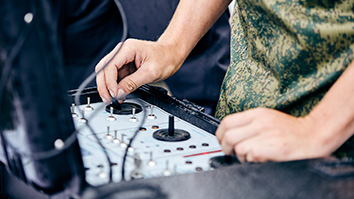Citation
Antonuk, L. E.; Zhao, Q.; El-Mohri, Y.; Du, H.; Wang, Y.; Street, R. A.; Ho, J. H.; Weisfield, R. L.; Yao, W. An investigation of signal performance enhancements achieved through innovative pixel design across several generations of indirect detection, active matrix, flat-panel arrays. Medical Physics. 2009 July; 36 (7): 3322-3339.
Abstract
Active matrix flat-panel imager (AMFPI) technology is being employed for an increasing variety of imaging applications. An important element in the adoption of this technology has been significant ongoing improvements in optical signal collection achieved through innovations in indirect detection array pixel design. Such improvements have a particularly beneficial effect on performance in applications involving low exposures and/or high spatial frequencies, where detective quantum efficiency is strongly reduced due to the relatively high level of additive electronic noise compared to signal levels of AMFPI devices. In this article, an examination of various signal properties, as determined through measurements and calculations related to novel array designs, is reported in the context of the evolution of AMFPI pixel design. For these studies, dark, optical, and radiation signal measurements were performed on prototype imagers incorporating a variety of increasingly sophisticated array designs, with pixel pitches ranging from 75 to 127 m. For each design, detailed measurements of fundamental pixel-level properties conducted under radiographic and fluoroscopic operating conditions are reported and the results are compared. A series of 127 m pitch arrays employing discrete photodiodes culminated in a novel design providing an optical fill factor of ~80% (thereby assuring improved x-ray sensitivity), and demonstrating low dark current, very low charge trapping and charge release, and a large range of linear signal response. In two of the designs having 75 and 90 m pitches, a novel continuous photodiode structure was found to provide fill factors that approach the theoretical maximum of 100%. Both sets of novel designs achieved large fill factors by employing architectures in which some, or all of the photodiode structure was elevated above the plane of the pixel addressing transistor. Generally, enhancement of the fill factor in either discrete or continuous photodiode arrays was observed to result in no degradation in MTF due to charge sharing between pixels. While the continuous designs exhibited relatively high levels of charge trapping and release, as well as shorter ranges of linearity, it is possible that these behaviors can be addressed through further refinements to pixel design. Both the continuous and the most recent discrete photodiode designs accommodate more sophisticated pixel circuitry than is present on conventional AMFPIs such as a pixel clamp circuit, which is demonstrated to limit signal saturation under conditions corresponding to high exposures. It is anticipated that photodiode structures such as the ones reported in this study will enable the development of even more complex pixel circuitry, such as pixel-level amplifiers, that will lead to further significant improvements in imager performance.


